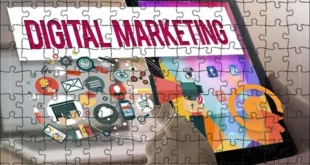In the rapidly evolving digital economy, businesses are increasingly adopting e-invoicing solutions to streamline their billing processes, ensure regulatory compliance, and improve operational efficiency. The cost of e-invoice software varies significantly based on several factors, making it essential for businesses to understand these elements before investing. This article will provide a comprehensive overview of the factors that influence e invoice software price, helping companies make informed decisions.
The Impact of Features and Functionality on Pricing
The features and functionalities of e-invoice software are primary determinants of its price. Basic software typically offers fundamental capabilities such as invoice generation, sending, and storage. However, more advanced solutions come equipped with additional features like automated tax calculations, real-time data synchronization, and integration with accounting systems. The more sophisticated the features, the higher the price tends to be. Businesses must assess their requirements carefully to avoid paying for functionalities they do not need.
Scalability and Its Role in Pricing
Scalability is another critical factor influencing e-invoice software price. Small businesses with limited invoicing needs might opt for entry-level packages, while larger enterprises with high-volume invoicing demands require scalable solutions. Scalable software allows businesses to expand their operations without the need for a system overhaul, but it often comes at a higher initial cost. The pricing models for such software may also include tiered plans that adjust as the business grows.
Integration Capabilities and Associated Costs
E-invoice software that seamlessly integrates with existing enterprise resource planning (ERP) systems, accounting software, and customer relationship management (CRM) platforms tends to be more expensive. Integration capabilities reduce manual data entry, minimize errors, and enhance overall efficiency. However, developing and maintaining these integrations requires additional resources, contributing to higher software costs.
Compliance with Regulatory Requirements
In countries like Saudi Arabia, where the Zakat, Tax, and Customs Authority (ZATCA) has mandated electronic invoicing, compliance becomes a crucial factor affecting software pricing. Software solutions that adhere to local tax regulations and provide features like digital signature generation and real-time reporting often carry a premium. Compliance ensures that businesses avoid penalties and maintain smooth operations, justifying the additional cost.
Deployment Options: Cloud vs. On-Premises
The deployment model significantly impacts the e-invoice software price. Cloud-based solutions, typically offered as Software-as-a-Service (SaaS), involve subscription-based pricing with lower upfront costs. These solutions provide automatic updates, data backups, and remote access, making them ideal for businesses seeking flexibility. Conversely, on-premises software requires a substantial initial investment in infrastructure and licenses but offers greater control over data and customization. Businesses must weigh the long-term costs and benefits of each option when selecting a deployment model.
User Licenses and Accessibility
The number of users and the level of access required also influence e-invoice software pricing. Many providers charge based on the number of user licenses, with costs increasing as more employees need access. Additionally, some software solutions offer tiered access levels, where advanced features are available only to specific user roles. Companies should evaluate their team’s needs to determine the optimal licensing structure.
Customization and Personalization Costs
Businesses often seek customized software to align with their unique invoicing workflows and branding requirements. Customization may involve developing specific features, modifying user interfaces, or integrating industry-specific modules. While tailored solutions enhance usability and efficiency, they also increase development time and costs. Companies must balance customization needs with budget constraints to achieve the desired functionality without overspending.
The Influence of Customer Support and Training
Reliable customer support and comprehensive training programs contribute to the overall e-invoice software price. Vendors offering 24/7 support, dedicated account managers, and personalized training sessions typically charge higher fees. However, investing in robust support services ensures that technical issues are resolved swiftly, minimizing disruptions to business operations. Training programs also empower employees to utilize the software effectively, maximizing the return on investment.
Subscription vs. Perpetual Licensing Models
E-invoice software providers generally offer two primary pricing models: subscription-based and perpetual licensing. Subscription models involve recurring payments, often on a monthly or annual basis, and usually include maintenance, updates, and support. This model provides flexibility and predictable costs but can become expensive over time. In contrast, perpetual licenses require a one-time payment, granting indefinite software usage. However, additional fees may apply for updates and support, making the total cost higher in the long run.
Geographic and Industry-Specific Pricing Variations
The geographic location and industry of a business can also affect the price of e-invoice software. Vendors often adjust pricing based on regional market conditions, local tax regulations, and currency exchange rates. Additionally, industry-specific solutions that cater to sectors like retail, manufacturing, or healthcare may include specialized features, leading to higher costs. Companies should compare prices across different regions and industry offerings to find the best value.
Evaluating Return on Investment (ROI)
While the initial cost of e-invoice software may seem high, businesses should consider the potential return on investment (ROI). Automated invoicing systems reduce manual labor, minimize errors, and expedite payment cycles, resulting in significant cost savings. Improved compliance with tax regulations also mitigates the risk of fines and audits. By analyzing the long-term benefits, companies can justify the expenditure on high-quality software.
The Role of Vendor Reputation and Experience
The reputation and experience of the software vendor can influence pricing. Established vendors with a proven track record and a large customer base often charge premium prices for their products. These vendors typically offer more reliable solutions, regular updates, and superior customer support. Newer entrants may provide competitive pricing but may lack the stability and features of well-established providers. Businesses must conduct thorough research and seek customer reviews to assess vendor reliability.
Conclusion: Making an Informed Decision
Understanding the factors that influence e-invoice software price helps businesses make informed decisions when selecting a solution. From feature sets and integration capabilities to deployment models and customer support, various elements contribute to the overall cost. By evaluating their specific needs and comparing available options, companies can choose software that aligns with their operational requirements and budget. Investing in the right e invoice software price not only streamlines invoicing processes but also enhances overall business efficiency, making it a valuable asset for long-term growth.
 Our Gateway to Insightful Blogging Exploring Ideas, Sharing Knowledge, Inspiring Minds
Our Gateway to Insightful Blogging Exploring Ideas, Sharing Knowledge, Inspiring Minds



